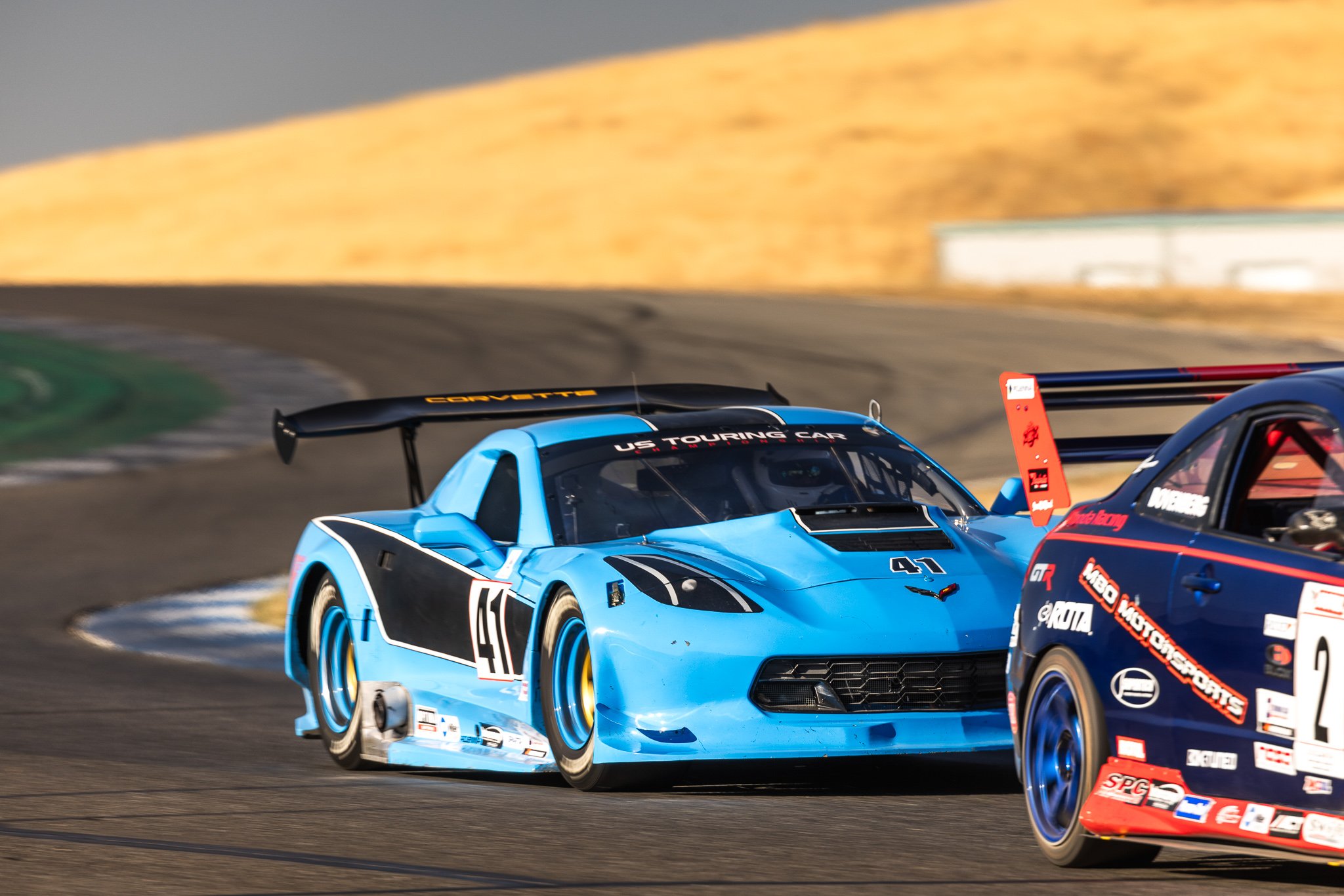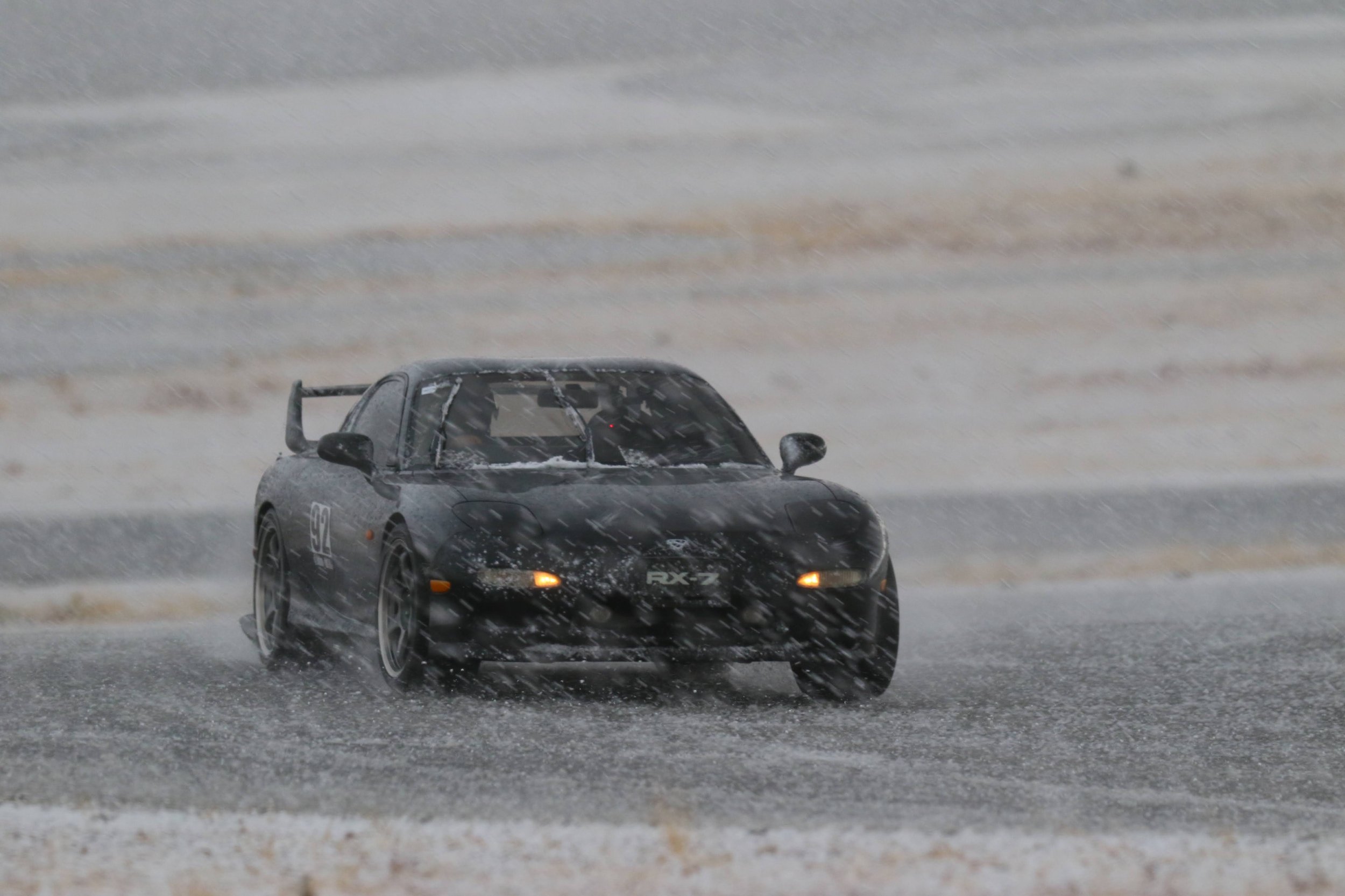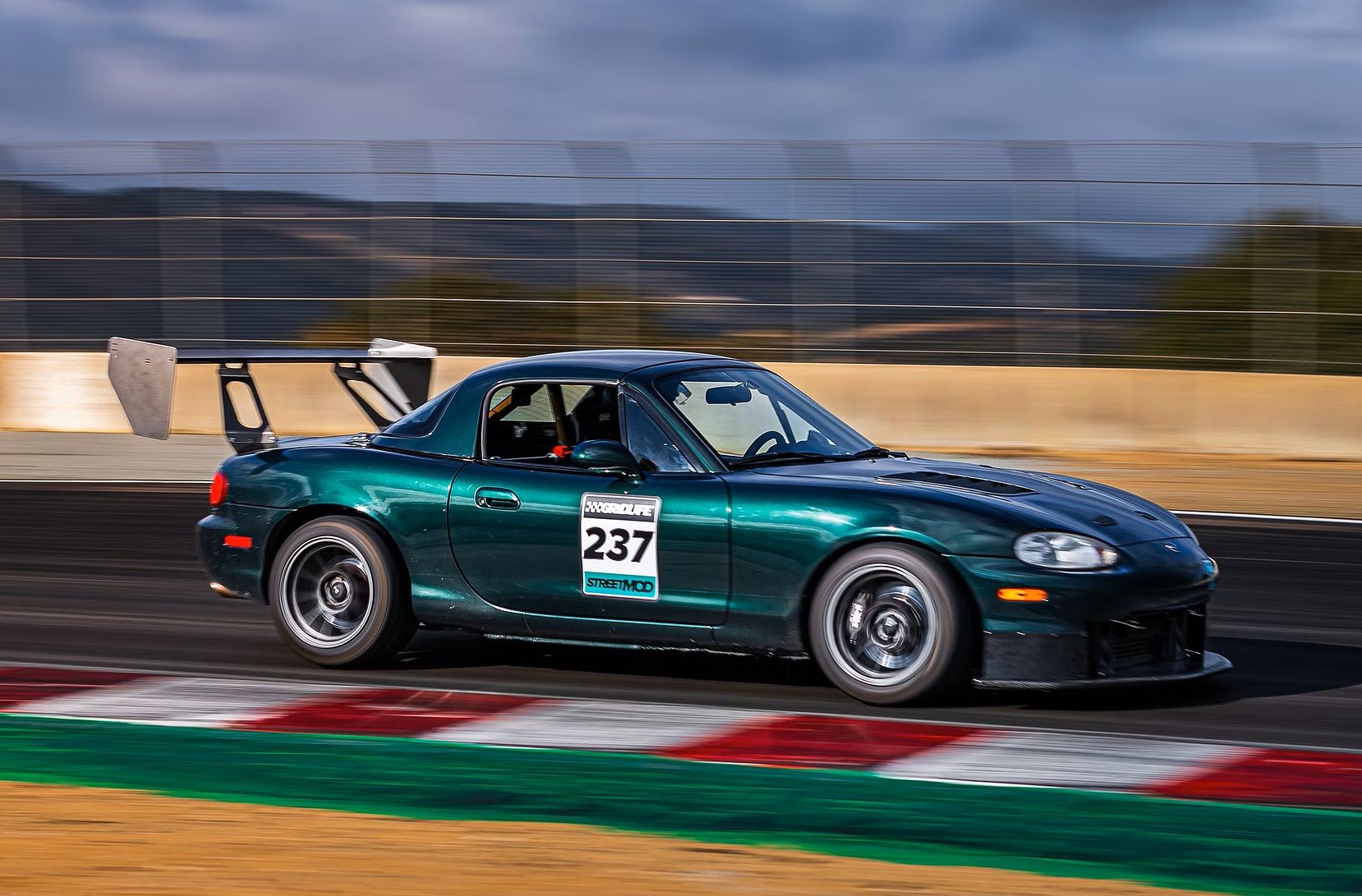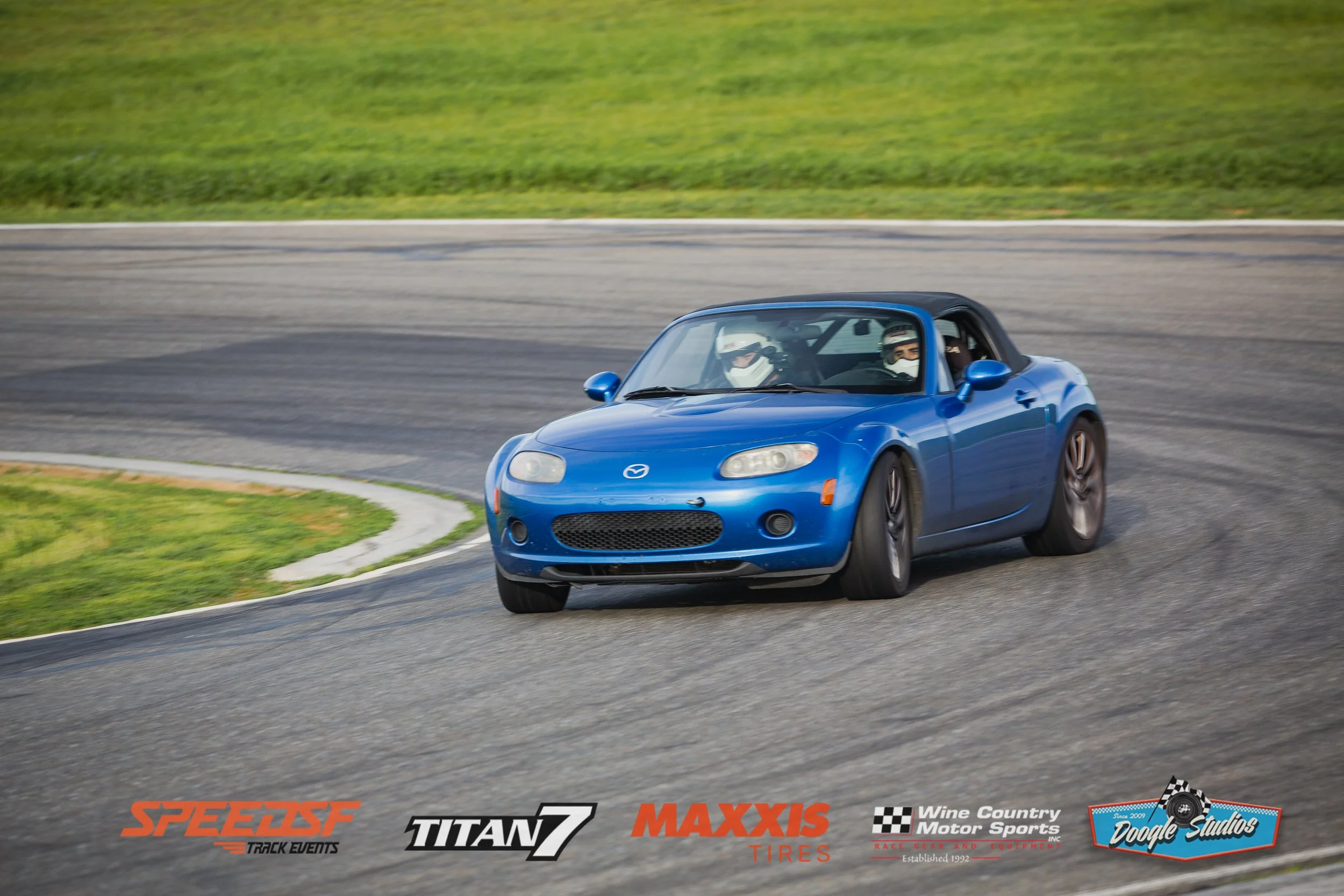
SpeedSF Blog
Every Build Has a Story – Meet the Cars of SpeedSF

Justin’s FC3S RX-7: Displaced Wankel
Justin Merritt’s desire to keep up with the Mustangs pushed him to ditch his FR-S for an LS1-swapped RX-7 in need of some TLC. With a little bit of work, he’s made the Mazda into a surprisingly approachable machine with plenty of untapped potential.

Rafael’s FD3S RX-7: Pipe Dream
After dreaming about one of his Gran Turismo hero cars for many years, Rafael Guerrero was able to trade up through over a dozen RX-7s and eventually snag this gorgeous 1992 RX-7 Type R.

Chris’ DCT-Swapped Miata: Grasping the Big Picture
By sourcing the right parts from retired race cars, using all his industry know-how, and taking the leap to install a BMW DCT in his NB, Chris Watson’s found an inspiring recipe for a reliable track-tuned Miata that can lap Laguna in 1:33.

Tom’s Miata: Frankenstein Fun
After getting tired of turbo problems with his Mini, Tom bought a cost-effective NC Miata to earn his spurs. After the stock motor blew, he decided to swap a Fusion 2.5-liter four to give the NC’s fantastic chassis some much-needed mid-range torque.

Alex’s FL5 Type R: Best of Both Worlds
The FK8 was too gaudy, the MX-5 was too cramped, and the FL5 was just right. When Alex was able to bring home a new Civic Type R for the occasional track outing, he knew he’d found the best possible compromise within his budget.
